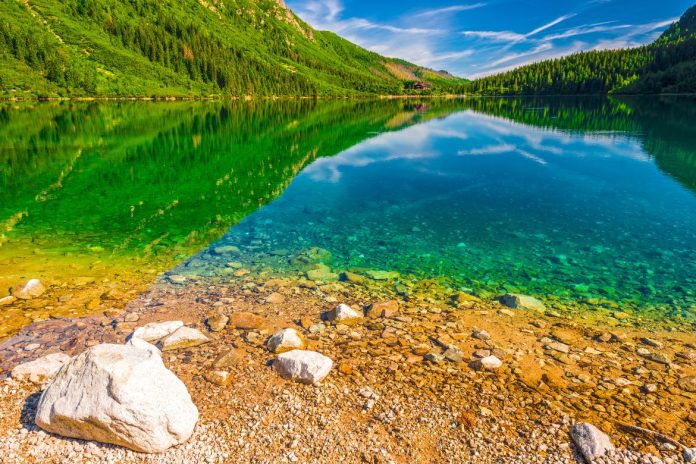Some people imagine sunken boats. Others picture a volcanic crater or maybe a small-town version of the Loch Ness monster. In reality, what’s at the bottom of Clear Lake is a mix of science, sediment, and a few surprises. It’s not a bottomless pit, but it’s got layers. Literally and figuratively.
A Very Old Lake, With a Very Soft Bottom
Clear Lake is over 2 million years old, which makes it the oldest lake in North America with continuous water. That means the bottom has had plenty of time to fill up. We’re talking layers and layers of volcanic ash, plant material, and fine silt that’s been washing in for millennia.
So if you’re expecting jagged rock walls and underwater cliffs, think again. Most of the lake floor is soft, muddy, and surprisingly flat in the shallow areas. If you’ve ever stepped in and felt your foot sink a little deeper than expected, that’s what’s down there.
What’s Actually Down There?
Here’s a quick list of what you might find at the bottom (or sometimes just under the surface):
- Volcanic rock formations from the lake’s geologic past
- Thick sediment layers built up from erosion, algae, and runoff
- Tree stumps, some thousands of years old, especially near the shoreline
- Sunken boats, lost gear, and probably more than a few smartphones
- Gas vents in some spots, thanks to the geothermal activity still lurking under the lake
Not the kind of place you’d want to go snorkeling for treasures, but fascinating in its own quiet way.
Clear Lake vs Lake Tahoe: A Size Check
Lake Tahoe often gets the spotlight for its sheer scale and alpine beauty. But Clear Lake holds its own in a different way.
- Lake Tahoe: About 191 square miles in surface area
- Clear Lake: Roughly 68 square miles in surface area
Tahoe is nearly three times larger, but Clear Lake still ranks as the largest natural freshwater lake entirely within California. That alone makes it a standout. Tahoe’s elevation and mountain surroundings give it that dramatic postcard look. Clear Lake, by contrast, is low, sprawling, and surrounded by rolling hills and volcanic features.
Different vibes, different ecosystems, and both worth exploring for what they are.
Is Clear Lake Man-Made?
Short answer: no. Clear Lake is completely natural and incredibly old. It was formed by volcanic activity and shaped by millions of years of erosion and tectonic movement. What does confuse people is the dam at the southern end, built in the early 1900s to regulate the outflow into Cache Creek.
The dam raised the water level slightly, which gave people the impression that the lake might be artificial. But it’s not. That water has been sitting here since long before humans arrived.
What We’ll Probably Never Know
There’s still a bit of mystery. The sediment layers are so thick and untouched that they hold a full record of past climates, fires, and even ancient earthquakes. Scientists use deep core samples from the lakebed to study everything from prehistoric droughts to volcanic eruptions.
As for hidden treasures or lost towns? Probably not. But there’s something humbling about knowing you’re floating above thousands of years of untouched earth.
Final Thoughts
So what’s at the bottom of Clear Lake? Mud, yes. But also history. Life. Movement. Maybe even a little awe, if you think about how long it’s been quietly sitting there doing its thing.
Next time you’re out on the water, take a second to imagine what’s underneath. It’s not flashy. But it’s deeper, figuratively anyway, than most people realize.








